Specification Of Centrifuge Tube Injection Molds
——
| Mold Material | P20/718/H13/45 #/S136 |
| Plastic Material | PP/PMMA/PS/PE/PVC/ABS/PA6.... |
| Mold Frame | LKM/DME/YUDO... |
| Mould Cavity | Multi Cavity |
| Runner | Cold Runner |
| Design Software | UG,AUTOCAD,moldflow,SOLIDWORKS |
| Mold Life | 30-50K Shot |
| Standard | DME |
| Centrifuge Tube Size | 15ml, 50ml |
Description Of Centrifuge Tube Injection Molds
——
Centrifuge tubes need to be exposed to strong acids, alkalis or biological samples, and the raw materials of the products need to be corrosion-resistant and resistant to high temperature sterilization. Centrifuge tube injection molds are precision tools specially designed for the production of centrifuge tubes in laboratories, and corrosion-resistant steels, such as S136H stainless steel, are used as raw materials for the production of injection molding of products, such as PCR tubes, micro-centrifuge tubes, and so on.
Centrifugal tubes usually have thin-walled and multi-specification product characteristics, centrifugal tube injection molds need to be designed through the layout of the multi-cavity such as 64-cavity, 96-cavity and 106-cavity, etc. to achieve the production of one out of a number of production, improve the production efficiency of centrifugal tubes.
The molding principle of centrifugal tube injection mold is to inject high temperature molten plastic into the mold cavity, and then rapidly mold into high precision, chemical resistant disposable centrifugal tube consumables. Centrifuge tube injection molds need to meet the stringent requirements of bio-compatibility, sealing and centrifugal force resistance. In addition to the multi-cavity design, centrifugal tubes also have the product characteristics of threaded and sealed structures. Centrifugal tube injection molds need to be integrated with a slider mechanism and a tilting top device to achieve complex demolding through the interlocking design to avoid thread deformation or burr problems.
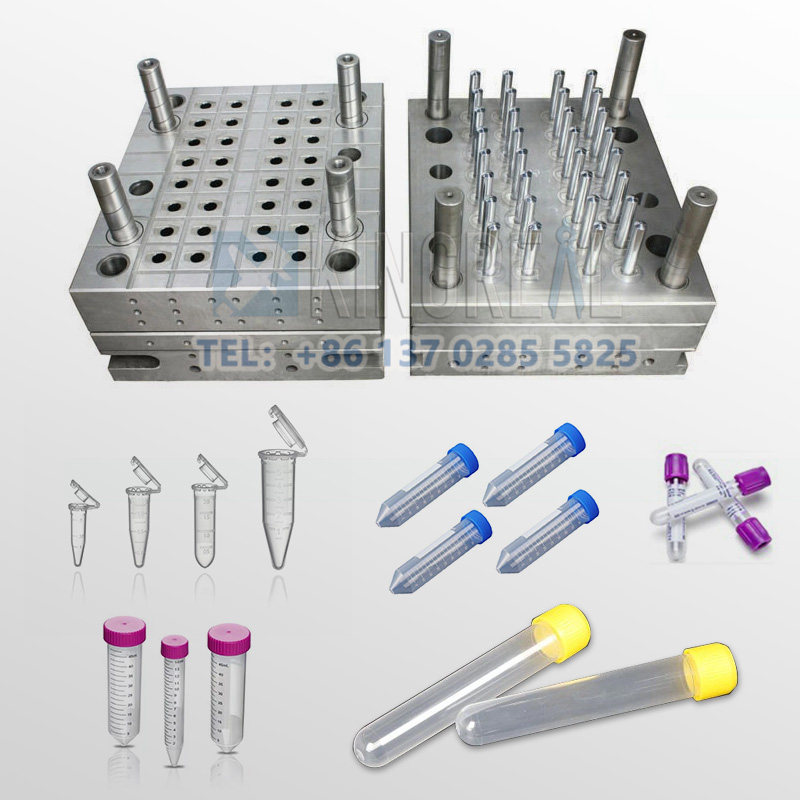
Design Feature Of Multi-Cavity Injection Molds
——
“The production characteristics of centrifugal tube products require multi-cavity injection molds for high volume production. Then how to manufacture multi-cavity injection molds?”
Our advantage
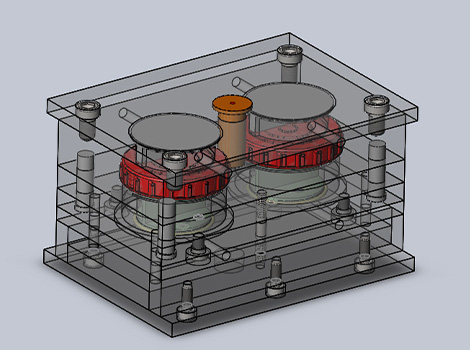
The core of multi-cavity mold lies in the reasonable layout of the mold cavities. Usually, symmetrical layout (such as 4 cavities, 8 cavities or 96 cavities) is adopted to balance the melt flow and reduce the problem of uneven filling, or “one main and multiple” runner system is adopted to ensure that the cavities are filled synchronously. Cavity spacing should be adjusted according to the product size and clamping force of the injection molding machine to avoid deformation caused by high local pressure.
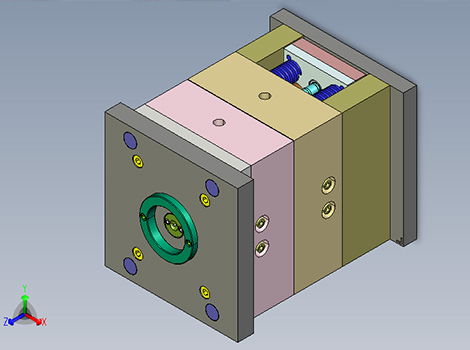
The parting surface of multi-cavity injection mold should be selected at the largest cross-section of the product, and the gap should be controlled ≤ 0.01mm to ensure the sealing, and the clamping mechanism often adopts the design of telescopic rod + rotary axis seat linkage to improve the efficiency of demolding.
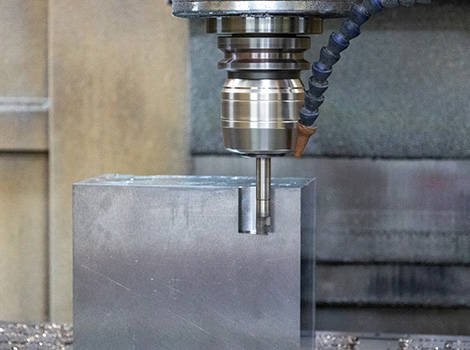
According to the shape of the mold cavity design independent cooling circuit, such as long tubular parts using spiral water circuit, thin-walled parts using jet cooling to ensure uniform heat dissipation. For multi-cavity molds, independent temperature control system should be configured for different cavities.
Common Centrifuge Tube Classifications
——
★Classification by capacity
1.Large capacity centrifuge tube
Specifications: 250mL, 500mL, 1000mL, etc. They are commonly used for cell culture, protein purification and other large sample processing. Generally, centrifuge tubes with a capacity greater than 100mL are centrifuge bottles.
2. Ordinary Centrifuge Tubes
Common specifications: 15mL, 50mL, suitable for routine sample separation (e.g. serum, cell precipitation)
3.Microcentrifuge tube
Specifications: 0.2mL, 0.5mL, 1.5mL, 2mL, often used in conjunction with microcentrifuges for the separation of trace reagents, commonly used in molecular biology micromanipulation experiments.
★Classified according to the shape of the bottom
1. Tapered bottom centrifuge tubes
Characteristics: Sharp bottom, easy to concentrate precipitation, suitable for micro-sample separation. When the sample is small and the precipitate is collected, the separation effect will be better with the centrifuge tube with pointed bottom, and the supernatant will be easier to be sucked up by pipette.
2. Round-bottomed tubes
Advantage: Large bottom area to withstand higher centrifugal forces, often used for density gradient separations. When collecting density gradients, you can choose a round bottom; the round bottom has a larger area and can withstand higher centrifugal forces than a pointed bottom.
3. Flat-bottomed centrifuge tubes
Application: Easy to place in an upright position, suitable for routine sample storage or low-speed centrifugation. Used in the same way as pointed-bottom tubes, but the tubes can be placed in an upright position for easy removal during experiments. Other flat-bottomed centrifuge tubes are mostly centrifuge bottles and sample tubes.
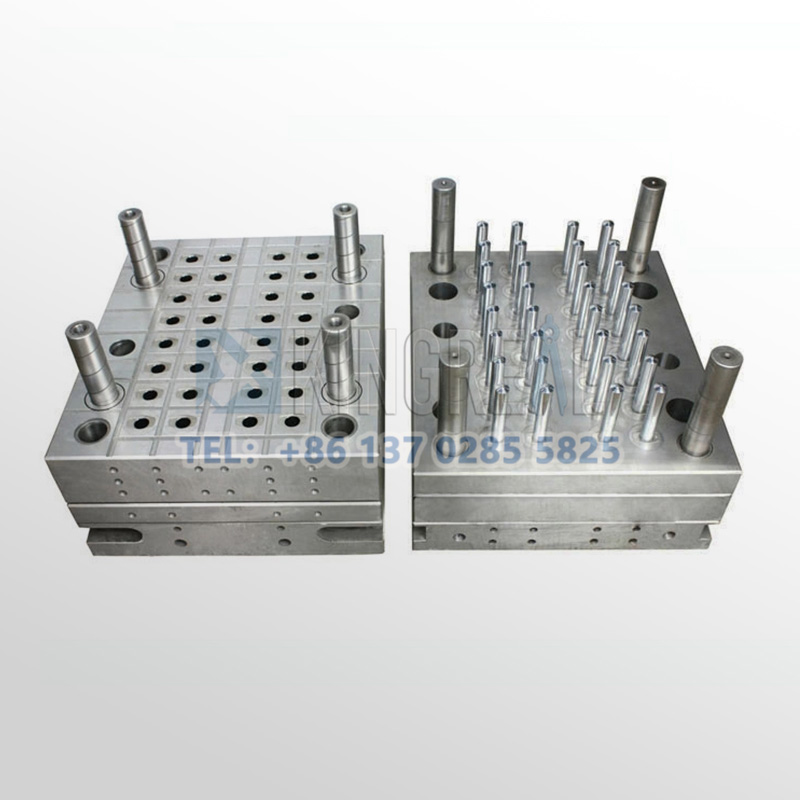
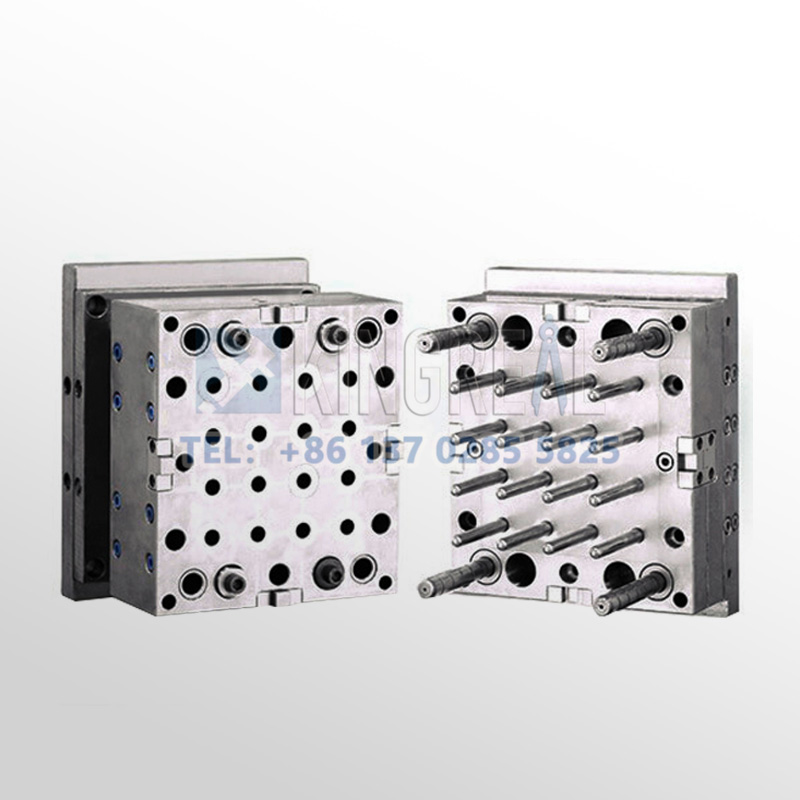
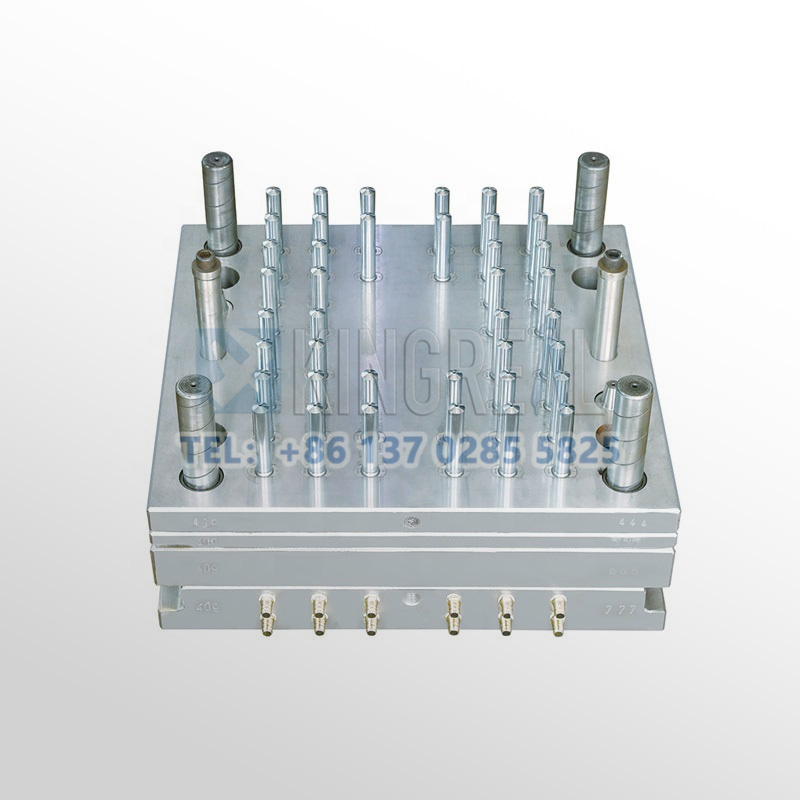
Centrifuge Tube Injection Mould Appliocation
——
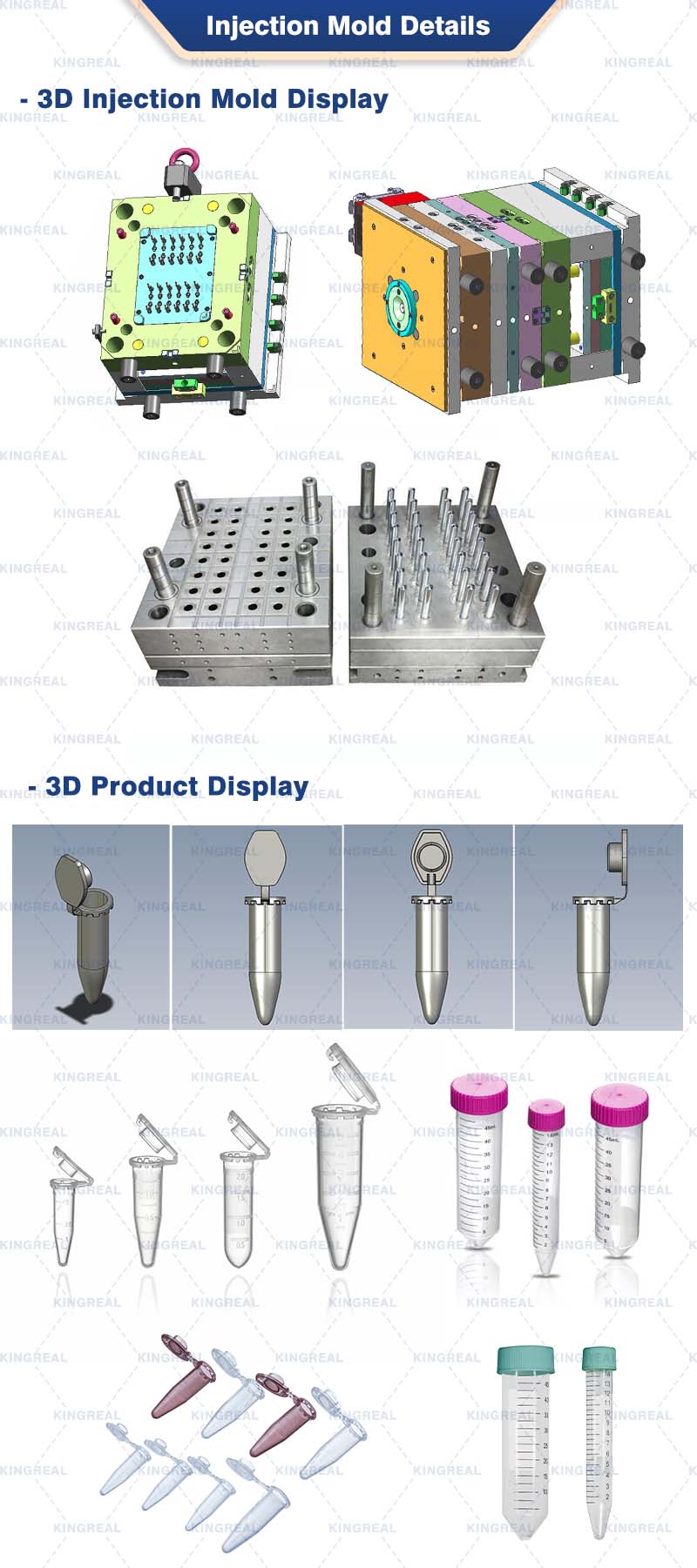
Why Choose KRMOLD?
—
1.One-stop full-process service
We provide full-process service from integrating requirements, mold design and manufacturing to delivery and after-sales service.
The technical team is deeply involved in the customer's product design stage, optimizing the mold structure and designing the mold drawings through the mold flow analysis software (such as Autodesk Moldflow, UGNX). Equipped with imported CNC, Shadick wire cutting machine, mirror discharge equipment and other precision processing equipment to achieve ±0.02mm precision;
We have a large-scale intelligent workshop to support secondary processing such as silk-screen printing, welding, spraying, etc. We strictly implement the quality system of ISO13485 and IATF16949; meanwhile, we provide free transportation, regular mold maintenance and one-year warranty service.
2.Complete quality control system
There is a full chain production workshop, using Makino five-axis machining centers, Haitian injection molding machines and other well-known equipment at home and abroad to avoid delays in outgoing processing. Through the CMM coordinate measuring machine, three-dimensional inspection instrument full inspection of key dimensions, the implementation of PDCA cycle quality management. Meanwhile, we provide complete quality inspection report of injection molds.
3.Accurate delivery control to guarantee the project schedule
Through digital management, production progress monitoring from the beginning of the order, for different orders and delivery date for data monitoring, once there are factors that may be delayed, immediately arrange to speed up the production schedule, to ensure that the customer in the delivery period to complete the manufacturing of plastic injection molds.
Specify the type of plastic (e.g. PP, ABS) and post-processing requirements (e.g. spraying, silk-screen printing), and provide 2D or 3D plastic part drawings should be provided. At the same time, provide the production volume, appearance requirements, tolerance standards, etc.
Generally speaking, our engineers will start to prepare the quotation immediately after the customer provides the complete production requirements. Usually it takes about 1-3 days.
The lead time for regular injection molds is usually 30-60 days, and may be longer for complex molds. For example, the typical lead time for liquid silicone molds is around 60 days, covering design, manufacturing, mold testing, etc.
High-precision processing technology: High-precision equipment such as CNC machining centers (CNC) and electric discharge machining (EDM) are used to optimize the design process in combination with CAD/CAM software. Quality control: Inspection of key dimensions of the mold by Coordinate Measuring Machine (CMM) and verification of multiple sample batches during the trial molding stage. Material Selection: Use die steel with high wear resistance (e.g. H13, S136) and surface treatment (e.g. nitriding, chrome plating) for die nuts to extend the life.
After every 50,000 molds, check the guide pillar, ejector pin and other wear parts, and clean up the residual plastic and rust on the mold surface. Use high temperature grease for sliding parts (e.g. tilt top, slider) to reduce friction loss. Ensure that the water circuit is smooth and the temperature difference is ≤5℃ to avoid cracking of the mold due to thermal stress.
Mould cost of materials accounted for about 30-40% (such as 1 ton of P20 steel price of about 20,000 yuan), processing costs accounted for more than 50% (CNC labor hourly rate of about 80-150 yuan / hour). Small batch production can choose aluminum mold or simplify the structural design; more than 100,000 pieces is recommended to use carbide inserts to enhance life!
Mould injection products need to fully meet the design requirements (such as size, appearance), and can be continuous and stable production. Mold marking, inspection reports (such as material hardness test) and engineering drawings should be complete.
Mould steel (such as S136H, NAK80 and other imported materials cost more) and the type of mold embryo (aluminum mold short-term cost is low but short life) directly affect the cost, the use of CAD/CAE/CAM design technology, hot runner system, etc. will increase the upfront investment, but can enhance the long-term benefits (such as reducing the sprues, increase production capacity).